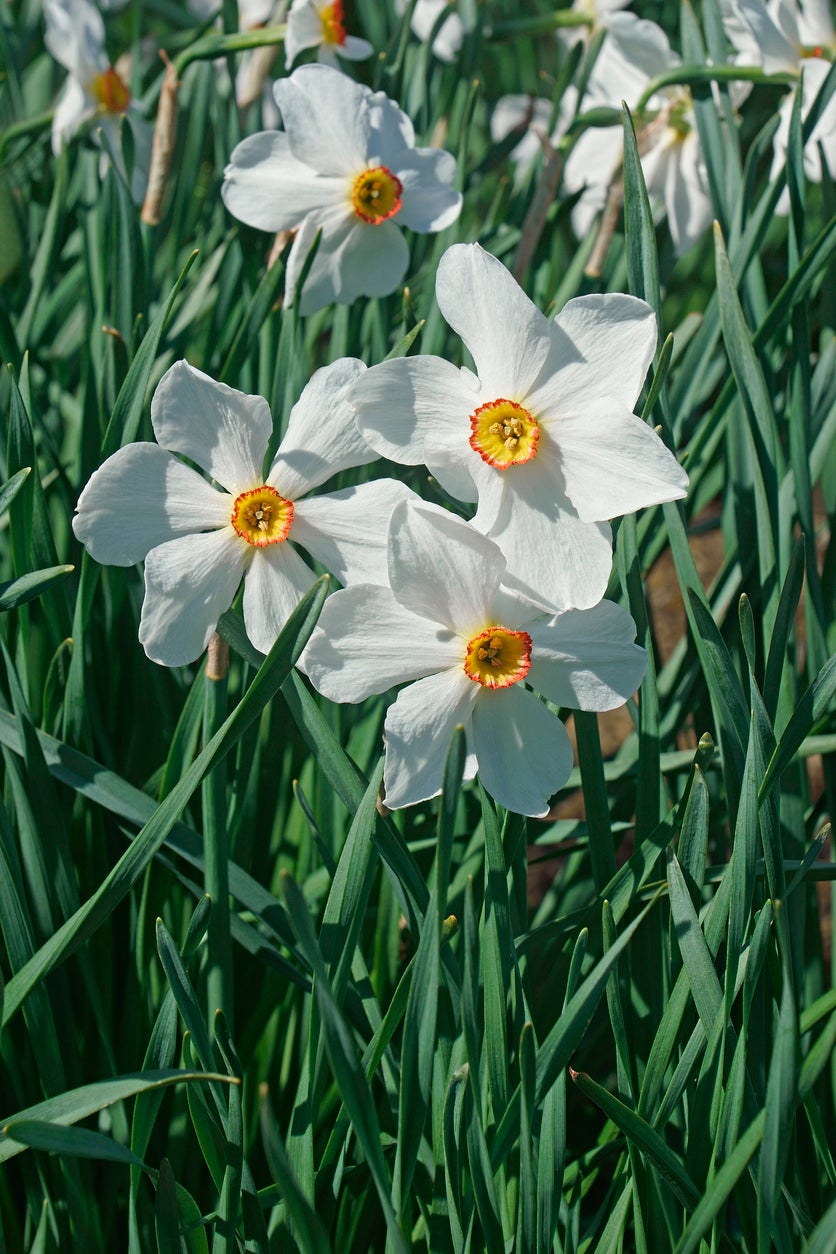Poet’s Daffodil Bulbs: Growing Poet’s Daffodils In The Garden


What are poet’s daffodils? Also known as poeticus daffodils, poet’s narcissus, or sometimes pheasant’s eye daffodil, poet’s daffodils produce beautiful blooms with pure white petals. The blooms appear later in the season than most daffodil varieties. Read on for poeticus daffodil plant care.
About Poet’s Daffodil Bulbs
Poet’s daffodil plants (Narcissus poeticus) are native to Central Europe, but they have gained popularity with gardeners around the globe. The hardy plants thrive in nearly every corner of the United States, with the exception of extremely hot climates. Once planted, poet’s daffodil bulbs will provide beauty for many spring seasons to come. Each bloom, one to a stem, is centered with greenish yellow cups (coronas) marked with distinctive, mahogany-red rims. Poet’s daffodil flowers are so fragrant that the oil is a primary component of many perfumes.
Growing Poet’s Daffodils
Plant poet’s daffodil bulbs about two to four weeks before the ground freezes in fall. Nearly any type of moist, well-drained soil is fine, although a raised bed or sloped area is ideal. Fortunately, poet’s daffodil plants tolerate moist winter conditions better than most other varieties. Improve the quality of the soil by digging in a few inches (8 cm.) of well-rotted manure or compost. Work the soil to a depth of 12 inches. (31 cm.) Although poet’s daffodil plants can tolerate a little shade, they perform best in full sunlight. Water poet’s daffodil blooms immediately after planting. Keep the bed moist during the growing season, and then decrease watering when the leaves begin to die down. Apply balanced, all-purpose fertilizer if your poet’s daffodil plants aren’t blooming well. You can also use a liquid fish fertilizer mix with water. Pour the mixture on the soil around the bulbs. Avoid high-nitrogen fertilizer. Remove blooms and stems as soon as they die. However, don’t remove the leaves until they begin to die down and turn brown. Poet’s daffodil leaves absorb energy from sunlight. Removing the foliage too early will compromise the health of the bulbs and result in smaller blooms.
Sign up for the Gardening Know How newsletter today and receive a free copy of our e-book "How to Grow Delicious Tomatoes".

A Credentialed Garden Writer, Mary H. Dyer was with Gardening Know How in the very beginning, publishing articles as early as 2007.